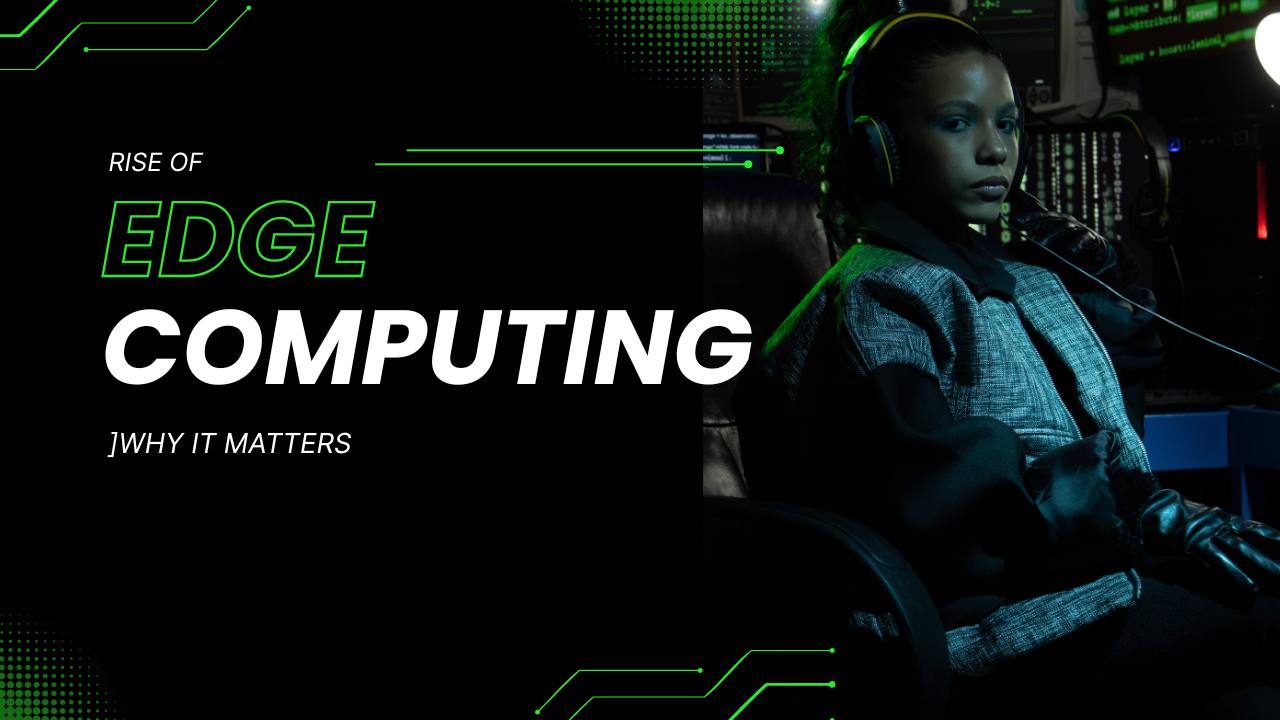The world is becoming more and more data-driven, thus we need processing to be faster and more efficient than ever. For years, traditional cloud computing has worked well for us, but it is starting to show its limits, especially in apps that need to handle data in real time. Edge computing is a strong new way to do things that gets programming more near where the material originates from.This change is changing the way we use technology and is likely to change industries from healthcare to manufacturing.
What is Edge Computing?
Edge computing lets devices like sensors, smartphones, and personal servers analyse information right at the “edge” of the web instead of transmitting it to the internet and waiting for a response.
This method lowers latency, saves bandwidth, and makes real-time analytics possible, all of which are important for applications that need to work quickly.
Why is edge computing becoming more popular?
There are a few important trends that are making edge computing more popular:
1. A lot of IoT devices are coming out
Traditional cloud networks have a hard time keeping up with the billions of Internet of Things (IoT) gadgets that are always sending data. Edge computing helps handle and process all of this new data where it is.
2. Need for Processing in Real Time
Autonomous vehicles, industrial automation, and augmented reality are all examples of applications that need to make decisions in a split second. Any delay, no matter how little, in sending or receiving data from the cloud can be very important.
3. Limitations on bandwidth and cost
Sending a lot of data to the cloud is expensive and doesn’t work well. Edge computing cuts down on the requirement for ongoing connection with the cloud, which lowers costs and bandwidth utilisation.
Worries about safety and privacy
When organisations process sensitive data locally, they have more control over privacy and compliance and the danger of data breaches during transmission goes down.
1. Very low latency
Edge computing cuts down on latency by a huge amount because it doesn’t need to send data to servers that are far away. This is important for things that need to happen in real time, such smart traffic systems, robotic surgery, and online games.
2. More Dependability
Edge devices may keep working and processing data locally even if the cloud connection goes down.
3. Better safety
When data is sent, keeping it closer to its source makes it less likely to be attacked by cyber attacks. Edge computing also makes it easy to use security procedures that are customised to certain devices or places.
4. Efficiency and Scalability
Companies can grow their operations without putting too much strain on centralised cloud infrastructure. Distributed processing is possible with edge infrastructure, which makes networks faster and more responsive.
Healthcare is one of the real-world uses of edge computing
Wearable tech and tools for remote monitoring keep track of health data all the time. Edge computing lets you look at this data quickly, which means that diagnoses and notifications can happen faster in emergencies. For example, a heart rate monitor that uses edge processing can find abnormal beats and let a doctor know right away without having to transfer the data to a cloud server first.
Industry and Manufacturing 4.0
Edge computing is very important for smart factories because it makes predictive maintenance, quality control, and robotic automation possible. Edge sensors on machines can find problems and change how they work right away.
Cars that drive themselves
Autonomous vehicles have to make choices on the spot based on traffic, road conditions, and how humans are going. Edge computing makes ensuring that navigation is safe by processing data from cameras, sensors, and radar on the spot.
Cities that are smart
Edge computing makes cities more responsive, efficient, and eco-friendly by improving things like traffic lights, surveillance systems, trash management, and energy grids.
Shopping and Customer Service
Retailers employ edge-enabled gadgets to make shopping more personal, keep track of their stock in real time, and speed up checkout using smart kiosks or systems that don’t have cashiers.
Problems in using edge computing
Edge computing has a lot of benefits, but it also has several problems:
- Costs of Infrastructure: Setting up and keeping edge devices can be costly, especially for small businesses.
- Device Management: To keep track of and maintain thousands of distributed edge nodes, you need advanced monitoring and maintenance plans.
- Security Risks: Edge computing can make things safer, but it also means that more endpoints need to be safeguarded.
- No Standards: The edge computing ecosystem is still changing, and not all of the protocols and technologies function well together all the time. Companies need to carefully think about these things and put money into strong infrastructure and qualified workers if they want to use edge solutions efficiently.
Conclusion:
Edge computing is changing a lot regarding the way we manage and analyse data. Edge computing brings computers much nearer to the point of origin, which speeds up response times, increases reliability, and improves security. Edge computing is increasingly becoming a must-have, not simply a choice, as the number of connected devices grows and the need for real-time insights grows. For organisations, governments, and developers, using edge computing is a way to remain ahead in a world that is becoming more competitive and focused on data. The edge is no longer the future; it’s where the future is happening right now.

